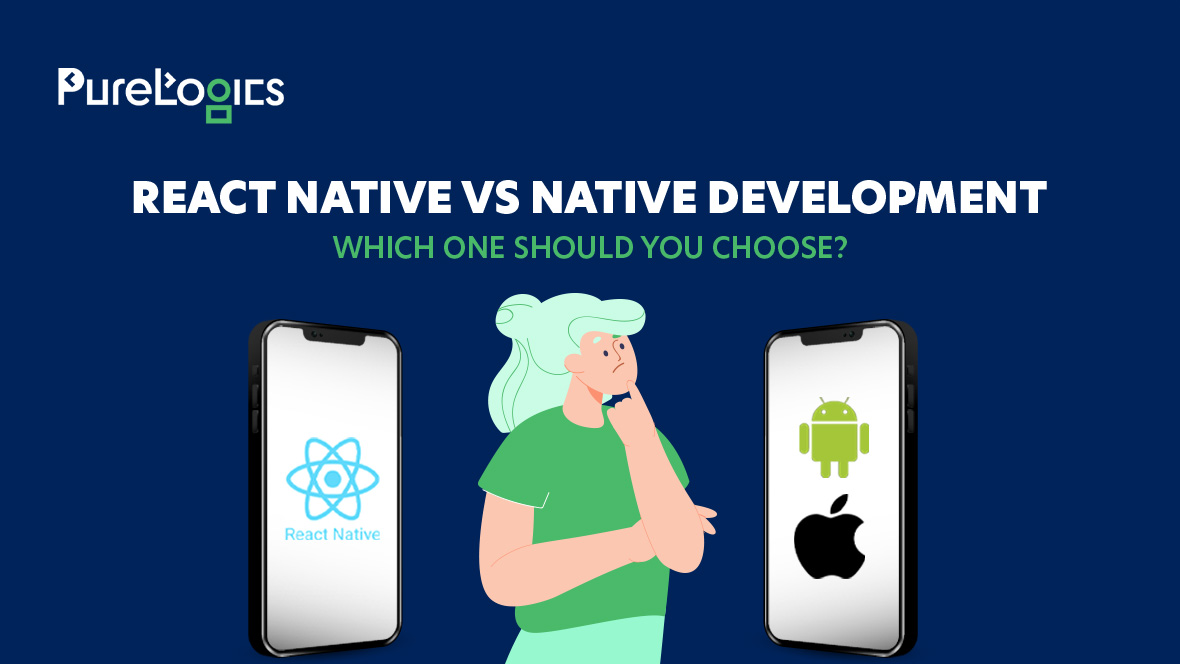There is a lot of debate in the mobile development community around which framework, Flutter or React Native, is the better one to use. Especially, when it comes to cross platform mobile app development.
This blog post will take a look at the pros and cons of each cross-platform framework and how they compare in order to help you decide which one is right for your next project.
What is Flutter Mobile app development?
Flutter is an open-source software development kit (SDK) created by Google. It is used to develop applications for Android, iOS, Windows, Mac, Linux, and the web.
The SDK includes a reactive framework that allows you to create beautiful user interfaces (UIs). It also provides access to the native platform APIs.
Flutter apps are written in the Dart programming language and run on the Dart VM. They are compiled ahead of time (AOT) into native code for each platform.
Flutter has been designed to provide a high-performance and cross-platform solution for mobile app development.
What is React Native Mobile app development?
React Native is a mobile app development framework that allows developers to create cross-platform apps using JavaScript.
With React Native, developers can create native user interfaces that work on both iOS and Android devices.
In addition, React Native provides a number of benefits over traditional native app development frameworks. These include better performance, shorter development times, and greater flexibility.
As a result, React Native has become one of the most popular mobile application development frameworks in recent years.
How are Flutter and React Native different?
React Native and Flutter are two of the most popular mobile development frameworks. Both offer a number of advantages over traditional development approaches. These include improved performance, faster development times, and increased flexibility.
However, there are also some key differences between the two frameworks. Here are five of the most important:
- Programming language: React Native uses JavaScript, while Flutter uses Dart. This can be a major deciding factor for some developers, as Dart is a less widely used language than JavaScript.
- Installation: React Native requires the installation of additional dependencies, such as the Android SDK and Xcode, while Flutter includes all the necessary tools in a single package. This can make Flutter a better choice for developers who are new to mobile development.
- Documentation: React Native has much better documentation than Flutter, making it easier to get started and find answers to common problems.
- Community support: React Native has a large and active community, with many resources available for learning and troubleshooting. Flutter’s community is growing quickly, but it is still smaller than React Native’s.
- Company backing: React Native is backed by Facebook, while Flutter is backed by Google. This can be an important consideration for developers who want to use a framework that is likely to be around for the long term.
What are the pros and cons of Flutter?
Flutter is a cross-platform framework created by Google. It allows developers to write code once and build native apps for both iOS and Android.
PROS:
- Builds native apps for both iOS and Android from a single codebase
- Speeds up the development process
- Open source framework with a large and growing community
- Offers high performance and a smooth user experience
- Features Dart, a powerful programming language with several features that make it great for mobile app development
- Allows for easy integration of third-party libraries and SDKs
CONS:
- Not as widely adopted as other cross-platform frameworks like React Native
- Still in beta, so there may be some instability
- Does not support all of the native platform APIs yet
- A limited number of ready-made widgets and templates available
While Flutter has some cons, its pros largely outweigh them. The framework is constantly being improved and updated, so it is likely that any remaining cons will be resolved over time. If you’re looking to develop a cross-platform app, Flutter is definitely worth considering.
What are the pros and cons of React Native?
React Native has emerged as one of the most popular frameworks for building cross-platform mobile applications. However, like any tool, it has its own strengths and weaknesses. Let’s take a look at some of them.
PROS:
- React Native apps can be published to both iOS and Android app stores.
- React Native apps are fast and smooth, thanks to their native feel.
- React Native is easy to learn and use, making it a great choice for rapid prototyping or MVP development.
- React Native uses a declarative programming paradigm in which self-contained code units are written and then composed to build larger programs. This makes the code easy to read and debug.
- It allows you to reuse code components between different platforms, which saves development time and effort.
- It has a large community of developers, who have created many third-party libraries and tools that can be used in your projects.
- React Native is backed by Facebook, one of the largest tech companies in the world. This means that React Native is likely to continue being developed and supported for many years to come.
CONS:
- React Native doesn’t have as many pre-built components as other frameworks like Ionic or flutter. This can make development takes longer.
- Some features that are available out-of-the-box in other frameworks may need to be implemented using third-party libraries in React Native. This can add extra complexity to your project.
- If you’re looking to build a highly complex or custom app, React Native may not be the right choice. In these cases, you may be better off with a native development approach.
So which one should I pick for my next project?
When it comes to choosing a framework for cross-platform mobile development, there are two clear leaders: Flutter and React Native. Both frameworks have their own benefits and drawbacks, so it’s important to choose the one that’s right for your project.
React Native is a good choice if you’re looking for a JavaScript-based solution that can be used with existing codebases. It also has a large community of developers, which can be helpful for finding support and resources.
However, React Native can be more difficult to learn than Flutter, and it doesn’t offer as many built-in widgets.
Flutter, on the other hand, is a good choice if you’re looking for an easy-to-use framework with a clean design. It also offers more built-in widgets than React Native, making it easier to create a polished app.
However, Flutter apps can be larger in size than React Native apps, and they may not run as smoothly on older devices. Ultimately, the best way to choose between Flutter and React Native is to evaluate your needs and requirements.
If you’re looking for an easy-to-use solution with plenty of built-in features, then Flutter is the better choice. If you need something that’s more flexible and can be easily integrated with existing code, then React Native is the better option.
How can PureLogics come to the rescue?
Through this article, we hope that you can find an easy way to decide on the right framework for your application. If you simply can’t make a decision or need further in-depth consultation based on your specific needs, feel free to contact us today for recommendations, courteous and informative business advice, and development support.
We’re a leading mobile app development company with a plethora of experience in this area. We would love to assist you with anything and everything you need to launch a full-blown mobile application, regardless of the platform.


 [tta_listen_btn]
[tta_listen_btn]
 September 13 2022
September 13 2022






